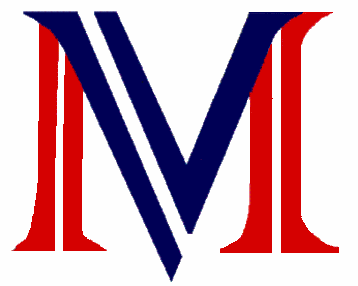History of the Charles Oxman |

Click on the image to see an enlargement.
| - The Charles Oxman comes from very good stock. She's 74 and continues to work a full watch.
|

 | - Launched on May 20, 1941, as the
H. S. Falk out of Wilmington Delaware, the Charles was a steam tug. It was built by the Pusey & Jones Corp., for Donaldson Towing & Lighterage Company,
a subsidiary of Curtis Bay Towing Company, later owned by Moran.
|

 | - Mr. Pusey and Mr. Jones were very good mechanics.
In 1848, they founded a corporation, a small plant and machine shop that specialized in marine engines and general machine work. By 1850, their company was the
largest ship building company on the east coast of the United States. Pusey and Jones built war sloops and sidewheel gunboats and engines and boilers used during the
Civil War.
|

 | - In 1854, they built the first iron sailing vessel in the
United States, the schooner Mahlon Betts. This was a radical project in its day. Though skeptics laughed and claimed an iron vessel would sink because iron
doesn't float, Pusey and Jones proved a vessel displacing its own weight in water would float. Use metal instead of wood to build a boat? Revolutionary!
-
- In 1867, they steered a new course. When the Rockland Paper Mill burned to the ground, Pusey and Jones were implored to build large papermaking
machines. They did. The first Pusey and Jones papermaking machines were still working at age 52. Requests for faster and larger machines continued to be filled and
shipped world wide.
|

 | - But, the company hadn't neglected its maritime leadership.
It built steamers for South America and yachts for the wealthy. Of note is their yacht the Volunteer, winner of the 1887 America's Cup. She measured 86 feet in length,
a little shorter than the Charles. She beat the English Thistle and the America's Cup remained in the possession of the United States. They also built diesel
yachts at least through the 1920s.
|

 | - During the world wars Pusey and Jones company employed
thousands to built troop ships and cargo vessels. In 1941 they built the H. S. Falk, the Charles, using a 2 cylinder Skinner Unaflow 25 by 20, 600 horse power,
one water tube boiler with 185 pound per square inch working pressure.
|
  |
 | - The vessel proved successful and in 1943 they built the
sister ship to the H. S. Falk, the Justine.
|
 | - After World War II the Pusey and Jones company
focused only on papermaking while the Charles as the H. S. Falk and the Justine worked in Delaware. Other vessels made by the company founded
by Pusey and Jones were built and launched and served as ferries and dredges and troopships all hard working vessels.
|
 | - But, things change.
-
-
- First a bit of history.
|
 | -
- Back to the Charles.
-
- The
Charles Oxman as the H. J. Falk was launched in 1941.
She is a steel hull tug boat, made by the company who justly and proudly boast building steel vessels. She was a sleek lined vessel with a steam driven propeller. She was really spectacular.
|
 | - Steam tug boats REIGNED into the
1950s. The Charles as the H. S. Faulk worked in Delaware with other ships of Curtis Bay Towing.
|
 | - But, the diesel engine, introduced in the
early 1900s in vessels, made steam engine tug boats obsolete by the end of the 1950s.
|
 | - It's 1959. In a corporate restructuring,
the H. S. Falk is sold. She's growing old. She's growing old at age 24 because she's steam, not diesel. Many steam vessels continue useful
lives for another 10 or 20 years. But, today, in 2007, most have ended their useful service. How did the H. S. Falk survive?
-
- A heart transplant.
|
 | - It came in 1965, when she was sold to
A. P. Philip, Inc. and moved to Tampa, Florida. She was renamed the A.P. St. Philip. She lost her stunning art deco lines and was repowered with
a 3600 horse power, 16 cylinder ALCO diesel engine.
|
  |
 | - In the '70s, she was sold twice.
Once to Bay Transportation Corp. and then to HVide Marine Towning , both out of Tampa, Florida. Each time she retained the name A.P. St. Philip.
|
 | - In 1997 she was sold again to Seabulk
Towing Inc., the largest tug operator in the U.S. Gulf and Florida markets. She was renamed the St. Petersburg.
|
 | - That brings us nearly to today.
- In the spring of 2006, Mike began repairs and purchased the "Charles Oxman."
|
 | - In the fall of 2006 the Charles made
the trip home.
-
- The captain and crew sailed, cleaned, rested, and watched the dolphins who acted as escorts.
|
 | - Once in its home port, the Charles began work and continued repairs.
It tried pulling a tiny tanker off the Far Rockaway. It brought transformers to Manhattan, just south of the Intrepid.
It assisted and lightered and worked with the Dorothy. In 2015, it broke ice in New York Harbor and further up the Hudson.
|
 |
|


|


|
 | - Today on the radio, you may hear, the Robert McAllister, the Christine McAllister, the Morton Bouchard IV, the Janice Anne Reinauer, the JoAnne Reinauer, the Kimberly Turecamo, Miriam Moran, Grandma Lee T Moran, Margaret Moran, Amy Moran.
- Or ...
- Today on the radio, you may hear
Charles Oxman, "Finest Man I Ever Met."
|



































